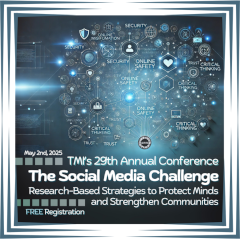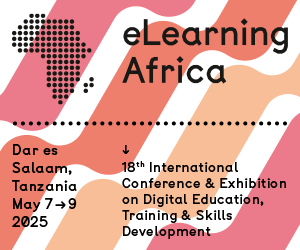Efficiency and Effectiveness of the Learning Functions
 Ardmore, PA (US), November 2009 - The current crisis is placing great strain on corporate learning and development, yet many use learning technologies to creatively adapt to rapidly changing business needs and, at the same time, to deliver more for less. Nick van Dam will present his point of view as visionary, consultant, and thought leader in learning and development. He is the Global Director Learning, eLearning Solutions and Technologies for Deloitte, with 170,000 employees globally, and he also serves as engagement advisor for clients at Deloitte's Global Human Capital Practice. At the same time, van Dam is Founder and Chairman of the global non-profit foundation "eLearning for Kids".
Ardmore, PA (US), November 2009 - The current crisis is placing great strain on corporate learning and development, yet many use learning technologies to creatively adapt to rapidly changing business needs and, at the same time, to deliver more for less. Nick van Dam will present his point of view as visionary, consultant, and thought leader in learning and development. He is the Global Director Learning, eLearning Solutions and Technologies for Deloitte, with 170,000 employees globally, and he also serves as engagement advisor for clients at Deloitte's Global Human Capital Practice. At the same time, van Dam is Founder and Chairman of the global non-profit foundation "eLearning for Kids".
In this time of economic instability, what would be your recommendation to managers in terms of talent-management strategies and professional development?
Nick van Dam: Economically challenging times will force many organizations to rethink their learning and development strategies. The first step is to look at the overall business strategy and make sure that the learning and development initiatives are aligned with the business.
As part of this, a capability or learning-needs analysis needs to be completed to assess a variety of items, including
- Which products or services should be developed and launched?
- What are people's proficiency levels in (new) information systems and company policies, processes, and procedures?
- Which of the leadership competences are lacking?
- What are some of the new demands driven by legal and regulatory mandates;
- Is there a business case to (re-) educate vendors, business partners, and/or customers? - etc.
The outcome of the assessment can be translated to well-defined top-priority initiatives for different audiences. And as part of this strategy, there is also a need to determine the initiatives that will have a lower priority and should be stopped.
Organizations should also take the opportunity to look at the overall efficiency and effectiveness of the learning and development function and current initiatives. Efficiency will focus on delivering the highest value for the investments made. Ways to enhance the efficiency include:
- reducing indirect and administrative learning costs
- automating learning administrative business processes
- outsourcing (offshore/nearshore) learning activities
- centralizing part of the learning function at business unit and/or at the corporate level
- leveraging more technology-based learning options.
Some key questions that drive the effectiveness of learning and development are:
- Do the learning investments build critical capabilities needed for the business?
- Do the learning investments help the enterprise to attract, develop, and retain talent?
- Do the learning investments support the implementation of strategic business initiatives?
Enterprises that continue to make smart investments in building people capabilities will benefit from this tremendously during and after the economic downturn to drive competitive advantage.
The global non-profit foundation e-Learning for Kids was founded in 2004 and provides a wide variety of free courses on various topics in several languages (English, Spanish, French, and Portuguese) to children between five and twelve years of age. How extensive have the Foundation's activities been in these five years? What are the main goals to achieve in the short and medium term?
Nick van Dam: The Foundation has grown year by year in reach, number of courses, and languages available. We now have over 175 courses available for free on our learning portal in various curriculums, including math, science, language arts, computers, heath, and life skills.
Of the 1.5 million children who have taken one of our courses this year, 500,000 accessed them via our learning portal. The other one million were actually "offline", as EFK has distributed its courseware through downloads and CDs to almost 3,900 schools, orphanages, and community centers around the world.
Latin America, the Caribbean, and Europe are important new areas of focus for us, and we expect to see usage grow substantially in these areas in the coming years due to the growth of new partners and local NGOs, as well as availability of new courseware in languages spoken in these regions.
As to our short and medium-term plans, the vision for e-Learning for Kids is to be recognized by 2015 as the primary source for technology-based childhood learning - accessible everywhere in the world without charge and supportive of the United Nations Millennium Education Goal to achieve universal primary education by 2015.
In order to do accomplish this, our strategic goals include:
- Curricula: continuing to expand our curriculum. More than 25 courses are currently in development.
- Impact: continue to reach more children. It is our goal to reach between 3-4 million children by 2010.
- Funding: acquire the funding necessary to sustain and grow the Foundation to the needed levels. This is critical to moving forward.
Nick van Dam will present "Delivering Learning to a Global Workforce in Volatile Times" at Online Educa Berlin. Please also visit the e-Learning for Kids stand (C94) in the Exhibition area.










